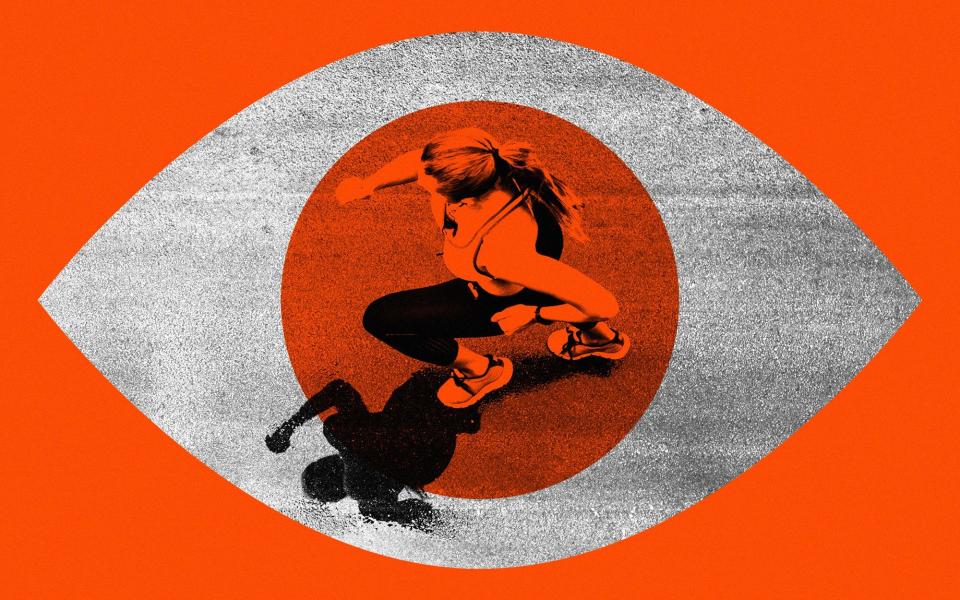How ‘Strava stalkers’ drove fitness apps to protect female joggers

Most men think nothing of pulling on their trainers, popping in their headphones and going out for an evening run.
But for millions of women it can be a different matter entirely. Data from This Girl Can, the Sport England campaign, found as many as half of women prefer not to be active after dark, with six in 10 worrying about the increased risk of harassment when exercising in the evening.
In some cases, stalkers have used fitness apps to follow their victims – taking advantage of the fact runners and joggers use the apps to broadcast details and even maps of their runs.
The trade-off between enabling women to publicly celebrate their athletic achievements and privacy is something Strava, the fitness app popular with millions of Britons, has long grappled with.
“Historically there have been a lot of barriers for women in sport and fitness in general,” says Michael Martin, the company’s newly appointed chief executive. “Strava has a big opportunity – but there were barriers on Strava too.”
Launched in 2009, Silicon Valley-based Strava has become a mainstay for runners and cyclists across the UK, who use its app to log maps of their routes and record their times, often competing in leaderboards against friends and strangers. Athletes can compare their times on sections of road or trail split into “segments” up and down the country.
The app enjoys a dedicated and competitive following in Britain (one in five have used the app and fans will commonly claim “if it’s not on Strava, it didn’t happen”).
But while its popularity has endured, it has long been dogged by concerns around privacy and safety – particularly for women.
Many people broadcast their running locations via the app by posting maps that feature their favourite routes – whether or not they recognise the privacy implications. A quick glance across social media returns a plethora of anxious posts from users worried that “Strava stalkers” might use the data they have accidentally shared to follow them home.
It is not just a hypothetical fear. In 2023, an American woman was jailed after using Strava to track and murder Moriah “Mo” Wilson, a 25-year-old cyclist. In the UK, there have been multiple cases of men being handed restraining orders for misusing Strava to keep a tab on ex-partners or victims.
While making sport social has always been a key selling point of Strava, Martin acknowledges the service needed to do more to make women feel safe when using the app.
“Strava has made some strides in that space, but there’s still more than it could be doing,” says Martin, who joined the app in January this year after stints at Nike and YouTube.
The company is now focused on “really delivering the product that our women users needed”, he argues.
One example is a new mode, Night Heat Maps, where users can check if areas are popular with other runners at night, allowing them to avoid running solo.
“They’re not going to be alone, but there’s also likely to be more light,” says Martin.

The company is also giving users more control over what they share. While users could already set their accounts to private, now they can make more granular edits when they finish a run, allowing them to easily remove details like start time and map data from their posts.
Having replaced co-founder and former chief executive Michael Horvath in January, Martin says he has since sought to “radically increase the performance of the company and the velocity of features” it is adding, which included a new Dark Mode and group subscriptions.
Another bugbear for many users is when Strava’s competitive leaderboards are infiltrated by suspicious results – in some cases from cheats – as well as users who break the app’s rules by cycling dangerously or too fast. Strava has said it will use artificial intelligence to flag and remove “irregular, improbable or impossible” activities.

Late last year the app also added direct messaging, although this too has raised concerns that the feature could add to digital harassment.
Martin argues Strava is taking a cautious approach that reflects these concerns.
By default, users can only be messaged by mutual followers, meaning those whom users follow and who also follow them back. This suggests a degree of mutual trust in the relationship.
“If we were a traditional social media network, we would want to turn messaging on to everyone, for everyone,” Martin says. He adds its messaging tool was designed to help “people be motivated”.
“I don’t want to increase the amount of time in the app, I want to increase the amount of activities that people do,” he says.
“The point of a social media network is to optimise your engagement in the app to get you to consume as much as possible to show you as many ads as possible. The point of Strava is to motivate you to go and take action in the real world.”
Strava, which is backed by investors Sequoia, Dragoneer and TCV, and was previously valued at $1.5bn, has enjoyed booming popularity since the pandemic. Martin says it has been profitable since 2020, making money from subscribers who can access premium features.
Despite lingering concerns about safety, Martin insists that women – particularly younger ones – are logging on to Strava.
“Gen Z women are growing on the platform in terms of new registrations at twice the rate that they were last year,” he says.
While the app cannot stop harassment, Strava argues it is making the streets safer for female runners.

 Yahoo Finance
Yahoo Finance 